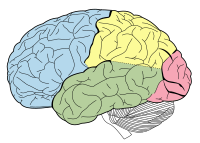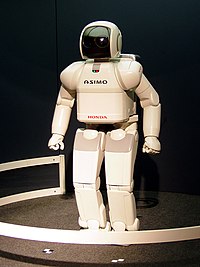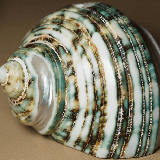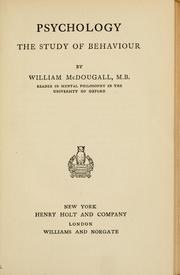
Is the manual following response an attempt to compensate for inferred self-motion?
Sign Up to like & getrecommendations! Published in 2019 at "Experimental Brain Research"
DOI: 10.1007/s00221-019-05607-x
Abstract: If the surrounding of a visual target unexpectedly starts to move during a fast goal-directed hand movement, the hand reflexively moves along with it. This is known as the ‘manual following response’. One explanation for… read more here.
Keywords: motion; inferred self; response; self motion ... See more keywords

Viewpoint oscillation improves the perception of distance travelled in static observers but not during treadmill walking
Sign Up to like & getrecommendations! Published in 2020 at "Experimental Brain Research"
DOI: 10.1007/s00221-020-05786-y
Abstract: Optic flow has been found to be a significant cue for static observers’ perception of distance travelled. In previous research conducted in a large-scale immersive display (CAVE), adding viewpoint oscillations to a radial optic flow… read more here.
Keywords: distance; self motion; static observers; distance travelled ... See more keywords

Adaptive integration of self-motion and goals in posterior parietal cortex.
Sign Up to like & getrecommendations! Published in 2022 at "Cell reports"
DOI: 10.1016/j.celrep.2022.110504
Abstract: Rats readily switch between foraging and more complex navigational behaviors such as pursuit of other rats or prey. These tasks require vastly different tracking of multiple behaviorally significant variables including self-motion state. To explore whether… read more here.
Keywords: parietal cortex; motion; posterior parietal; self motion ... See more keywords

Proprioception and the predictive sensing of active self-motion
Sign Up to like & getrecommendations! Published in 2021 at "Current opinion in physiology"
DOI: 10.1016/j.cophys.2020.12.001
Abstract: As we actively explore the environment, our motion relative to the world stimulates numerous sensory systems. Notably, proprioceptors provide feedback about body and limb position, while the vestibular system detects and encodes head motion. When… read more here.
Keywords: predictive sensing; motion; proprioception predictive; sensing active ... See more keywords

Self-motion conditions for a 3-PPPS parallel robot with delta-shaped base
Sign Up to like & getrecommendations! Published in 2019 at "Mechanism and Machine Theory"
DOI: 10.1016/j.mechmachtheory.2019.02.006
Abstract: Abstract This paper presents the self-motion conditions of the 3- PP PS parallel robot with an equilateral mobile platform and an equilateral-shaped base. The study of the direct kinematic model shows that this robot admits… read more here.
Keywords: parallel robot; shaped base; motion conditions; self motion ... See more keywords

The Ventral Posterior Lateral Thalamus Preferentially Encodes Externally Applied Versus Active Movement: Implications for Self-Motion Perception
Sign Up to like & getrecommendations! Published in 2019 at "Cerebral Cortex"
DOI: 10.1093/cercor/bhx325
Abstract: Successful interaction with our environment requires that voluntary behaviors be precisely coordinated with our perception of self-motion. The vestibular sensors in the inner ear detect self-motion and in turn send projections via the vestibular nuclei… read more here.
Keywords: motion; movement; self motion; ventral posterior ... See more keywords

Inertial Sensing and Encoding of Self-Motion: Structural and Functional Similarities across Metazoan Taxa.
Sign Up to like & getrecommendations! Published in 2018 at "Integrative and comparative biology"
DOI: 10.1093/icb/icy041
Abstract: To properly orient and navigate, moving animals must obtain information about the position and motion of their bodies. Animals detect inertial signals resulting from body accelerations and rotations using a variety of sensory systems. In… read more here.
Keywords: inertial sensing; motion; similarities across; sensing encoding ... See more keywords

An Algorithm to Design Redundant Manipulators of Optimally Fault-Tolerant Kinematic Structure
Sign Up to like & getrecommendations! Published in 2020 at "IEEE Robotics and Automation Letters"
DOI: 10.1109/lra.2020.3003282
Abstract: One measure of the global fault tolerance of a redundant robot is the size of its self-motion manifold. If this size is defined as the range of its joint angles, then the optimal self-motion manifold… read more here.
Keywords: size; motion manifold; kinematic structure; self motion ... See more keywords

Bicriteria Velocity Minimization Approach of Self-Motion for Redundant Robot Manipulators With Varying-Gain Recurrent Neural Network
Sign Up to like & getrecommendations! Published in 2022 at "IEEE Transactions on Cognitive and Developmental Systems"
DOI: 10.1109/tcds.2021.3054999
Abstract: In this article, a varying-gain neural bicriterion velocity minimization self-motion (VGN-BCVM-SM) approach is proposed to solve the self-motion problem for a redundant robot manipulator. First, based on quadratic programming (QP) method and neural dynamic method,… read more here.
Keywords: redundant robot; approach; self motion; velocity minimization ... See more keywords

Shift in lateralization during illusory self‐motion: EEG responses to visual flicker at 10 Hz and frequency‐specific modulation by tACS
Sign Up to like & getrecommendations! Published in 2019 at "European Journal of Neuroscience"
DOI: 10.1111/ejn.14543
Abstract: Self‐motion perception is a key aspect of higher vestibular processing, suggested to rely upon hemispheric lateralization and alpha‐band oscillations. The first aim of this study was to test for any lateralization in the EEG alpha… read more here.
Keywords: frequency specific; frequency; lateralization; self motion ... See more keywords

Cognitive, Systems, and Computational Neurosciences of the Self in Motion.
Sign Up to like & getrecommendations! Published in 2021 at "Annual review of psychology"
DOI: 10.1146/annurev-psych-021021-103038
Abstract: Navigating by path integration requires continuously estimating one's self-motion. This estimate may be derived from visual velocity and/or vestibular acceleration signals. Importantly, these senses in isolation are ill-equipped to provide accurate estimates, and thus visuo-vestibular… read more here.
Keywords: self motion; cognitive systems; computational neurosciences; systems computational ... See more keywords